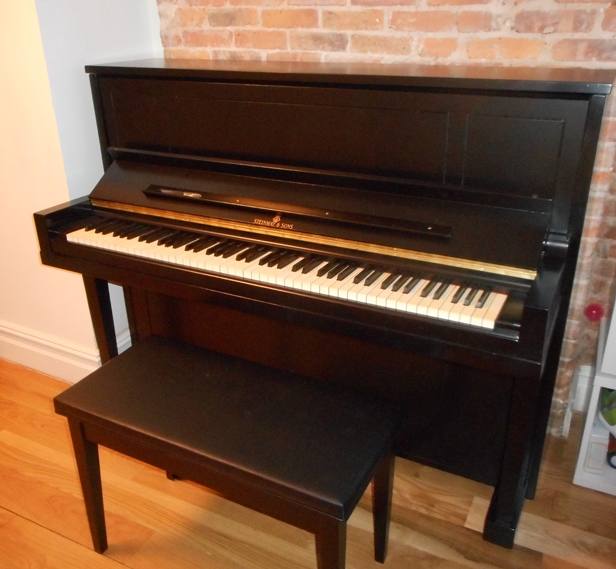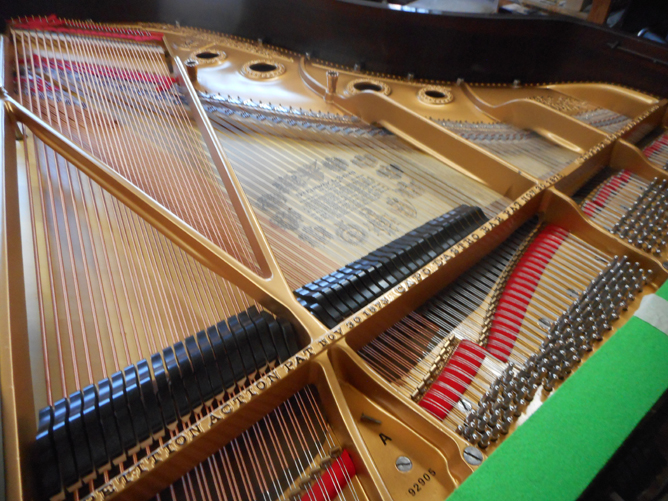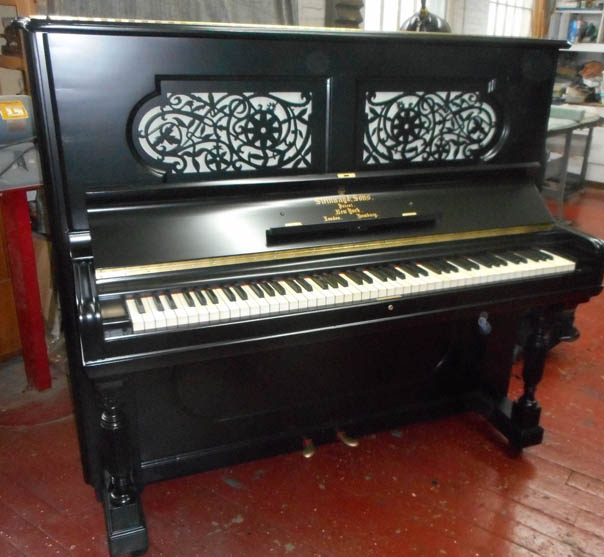
I do the entire range of repairs. On old uprights (regardless of make), the actions always need work. They were put together with hide glue, which fails after 50 years or so, and all the felt is either worn out or compressed, making the sound quality poor (This latter is also true of grands). All those little springs which make uprights work wear out too. Many old pianos still have ivory keys. Most people like to try and retain them, so I help by patching keyboards from my used ivory bin. (new ivory has not been available since the late 50’s).
Then there’s the strings. Regular piano wire has a useful, tunable, life of 60-80 years (without water damage). Bass strings usually die earlier, The copper or nickel windings come loose from the core wire, producing either a nasty buzz or a dead tubby sound after 50-60 years.

Most old pianos have some soundboard cracking, as a result of insufficient humidity in their environment. In grands, this is usually pretty serious, and involves a complex repair in which the strings and steel plate are removed, and the board recrowned and shimmed (and refinished). Uprights, which have an essentially flat board, do very nicely with a “glue & screw” repair, to stabilize the board and prevent changes in bridge bearing. (Steinway uprights on which I did this repair 20 years ago are still doing fine).
Pinblock replacement is generally necessary in about 50% of older grands, as the laminated ply of the original blocks has failed, making the piano untunable (particularly Knabe’s). Steinway uprights never have bad pinblocks, but they do often have cracked bass bridges which need repair.
Thus, a redo on almost any old piano can be quite complex, but many can get by with a set of new hammers, a regulation, and a double tune (If a flat piano is past the 80 year limit, the pitch cannot be raised to A440 using the original strings).
Since 2000, the “church basement” uprights, staple of my early career, the bar pianos of the speakeasy era, are all falling apart…The total overhaul they need is impractical. The 5′ baby grands which were churned out by Aeolian and Kimball in their thousands in the 30’s, and the Wurlitzer and Winter spinets of the 40’s and 50’s are simply not worth saving.

The Recession of 2008-2011 caused serious and permanent changes in the piano business. All pianos, regardless of make, country of origin or actual condition, depreciated as much as 40% in value. Even Steinways. That being said, in 2019 Steinways are still the value leader. Baldwin, which was the #2 make of the 1980’s, is no longer in manufacture, and has lost a lot of brand value, and Mason & Hamlin, which was the #2 piano of the early 21st century, has depreciated sharply. Sohmer, Knabe, and Chickering, which were excellent pianos, and still well known, along with Hardman 20 years ago, have virtually disappeared from the public consciousness by 2019. The practical result is that if you own one of these pianos, perhaps a 5’4″ Knabe grand from the 1920’s that needs a complete rebuild/refinish, it is not always cost effective to do it. It becomes a matter of personal sentimental attachment . It is very depressing to think of the destruction of these lovely pianos, but each piano owner [or buyer] has to think of value for money. I am one of the few rebuilders who actually works on these pianos and has parts for them.

